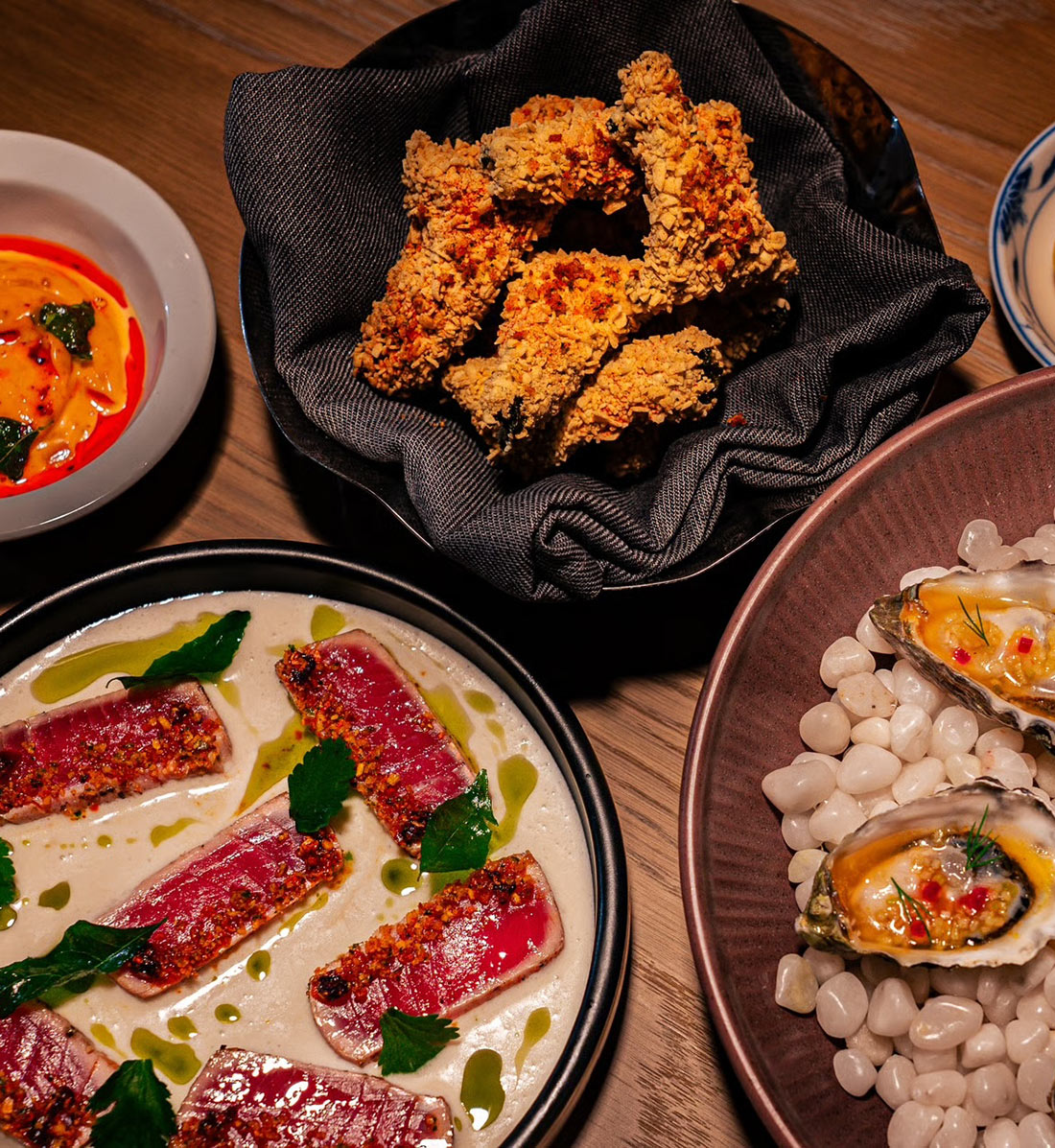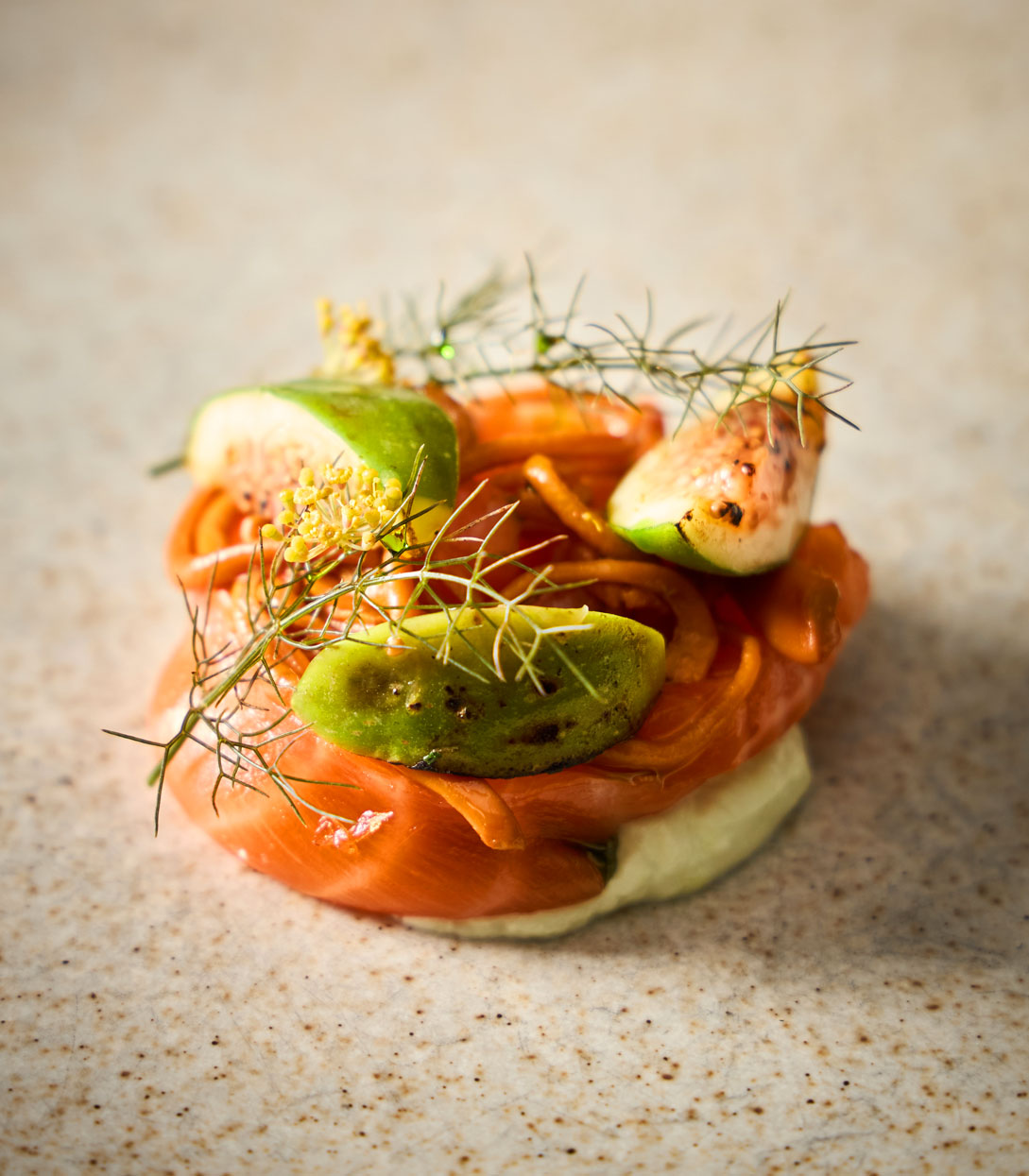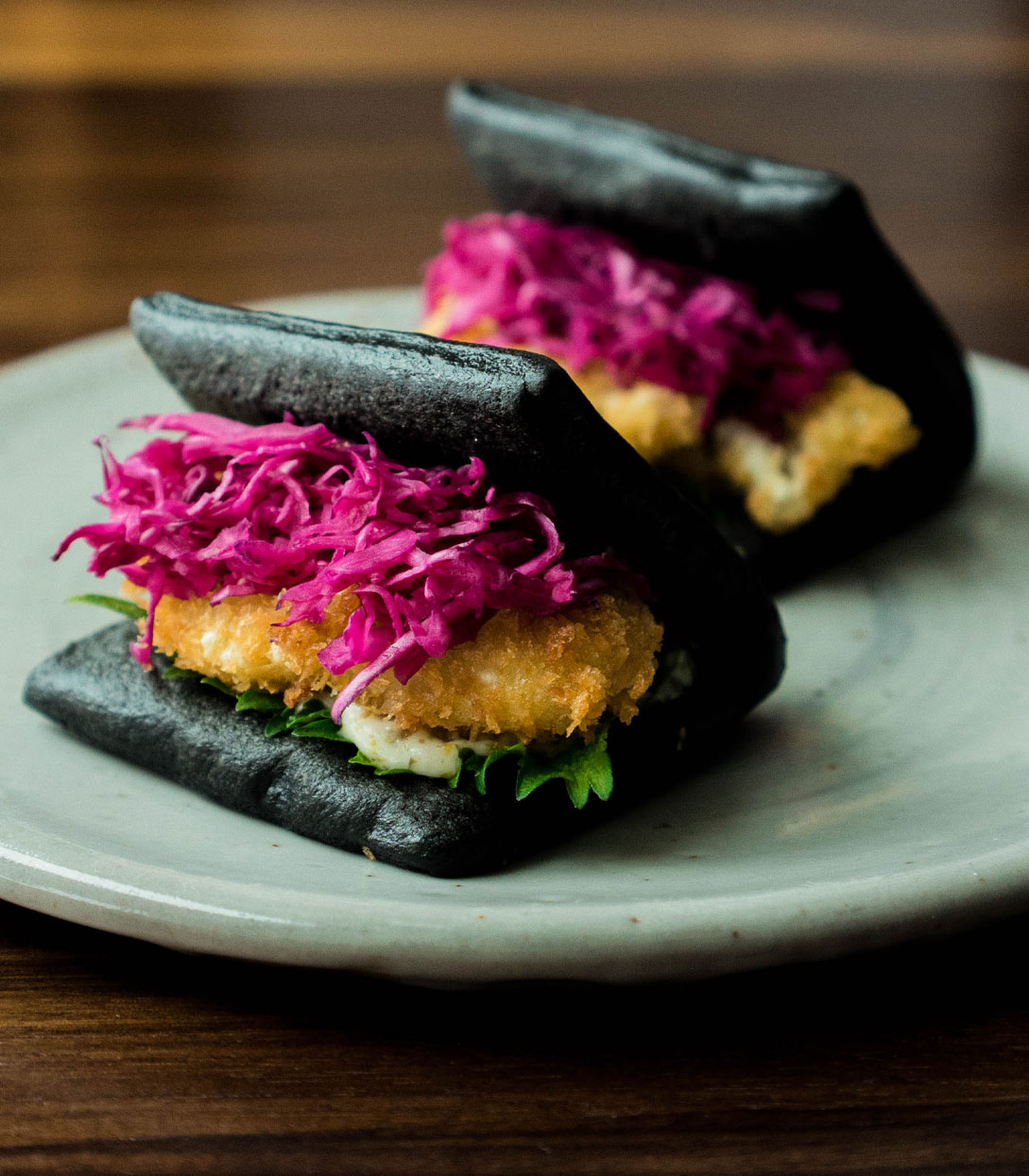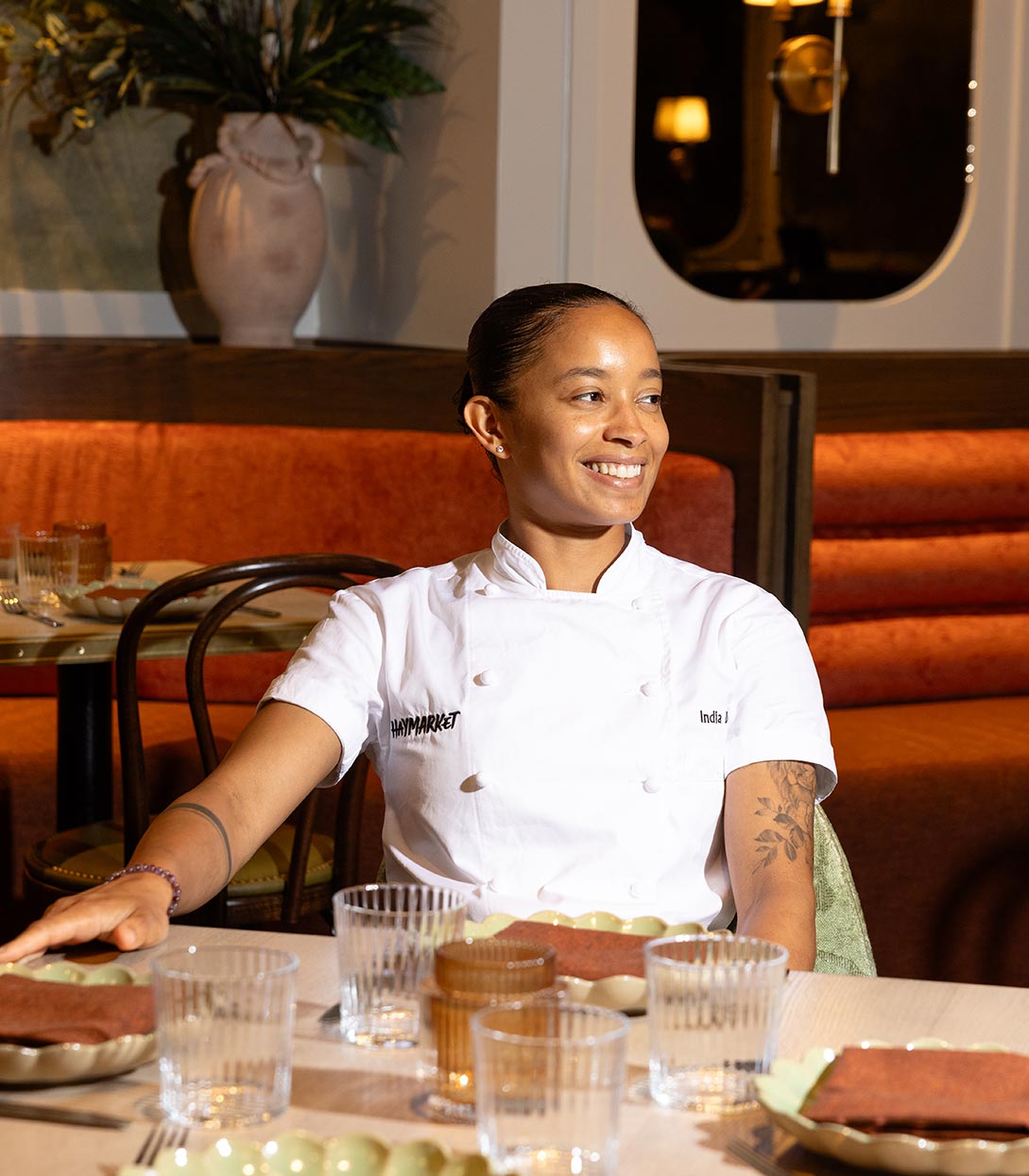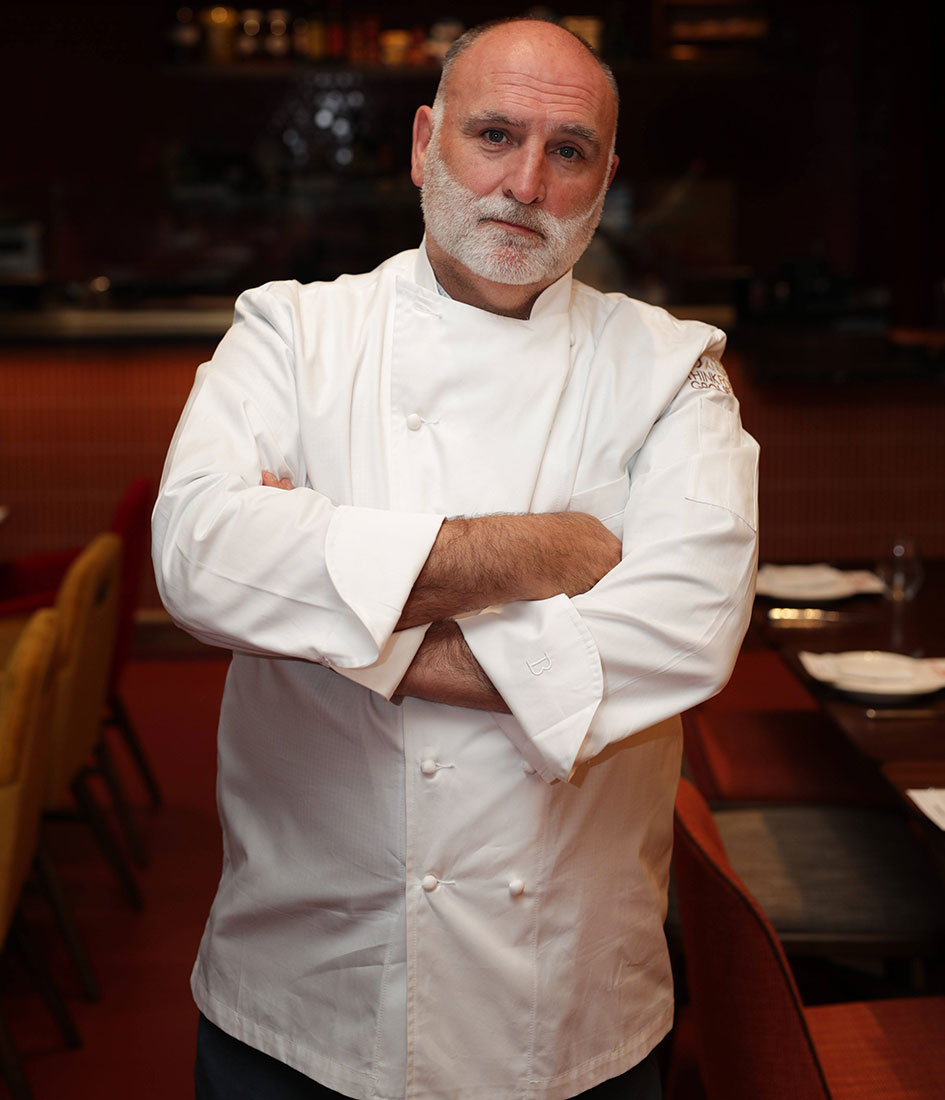Stefanie Hering never expected her pieces to grace the tables of some of the world’s finest restaurants. Thirty years ago, the Berlin-based ceramicist simply wanted to design tableware with a modern but elegant flair. “I wanted to create tables dramatically and get more art on the table,” she explains.
Hering wanted something contemporary but not too avant-garde: “Something that we can live with for hundreds of years,” she says. She assumed her pieces would be collected by sophisticated tastemakers entertaining in their private residences, until chefs embraced her work. “They were the first ones—I think because the food really looks extraordinary on these pieces.”
One chef who took an interest in her work early on was Thomas Keller, then employed at Charlie Trotter’s. The chefs started talking and she began to work with one big name after another. One chef who took note of her work is Charlie Mitchell, Executive Chef of Clover Hill. “What drew me to her pieces was seeing other chefs using them. On my way I saw that only the best chefs in the world were able to plate their food on Hering plates and I wanted to make sure that I earned the right to serve my food on such well-crafted pieces.”
Hering is a master of her craft and all of her pieces are made by hand. “We create objects with a human touch and work with materials like porcelain, glass, and metal.”
“I can tell when holding one of her pieces in my hand that they are unique,” says Frederik Berselius, chef/owner of Aska, who counts many of her pieces in his collection. “I can feel with my fingers and by the weight and balance of the pieces that a high level of skill went into creating them.”
Hering’s signature collection is “set up like a toolbox,” she explains. “There may be new glazes or designs, but they’re all designed to connect to other pieces in the collection.”

She also collaborates with chefs to create bespoke pieces that often become part of her growing catalog. “We inspire each other. The chef can create an amazing menu, I create the shape to display it, and then you get something really great.” Case in point? When German restaurant Überfahrt needed a vessel for their palate cleanser, Hering imagined a high-footed bowl. “You have to sit up straight when it’s put in front of you,” she shares.
Chef César Ramirez formerly of Chef’s Table at Brooklyn Fare, is a devotee, choosing Hering’s work for the “craftsmanship and quality.” “I have every piece she makes, including water glasses,” he says. “The pieces are clean and simple, and all about quality, just like my cuisine.”
“I find them both poetic and sophisticated,” says Chef Berselius. “We have about a dozen different shapes and sizes, and a few different sizes in the Cielo pattern, which are very special with the hand-drilled holes,” he says. “They complement the food and the ingredients we work with, both from an aesthetic point of view and from my intention of simply wanting to share the best possible experience with our guests.”
Chef Mitchell admires the pieces because “they help guests eat with their eyes first. They allow guests to admire everything about the dish and not just the flavors inside.”

Far from simply beautiful containers, her pieces also affect the experience. “When I go to see chefs and we start talking about trends, we think about how we can design pieces to connect and influence,” says Hering.
She isn’t afraid to roll up her sleeves, either. When an order was delivered to Enrico Bartolini al Mudec in Italy without the number of necessary plates, Hering collaborated with the chef to change the menu—on the spot. “We redesigned it, altering the menu so the dishes would be on different plates. Afterwards, he turned to me and said, ‘can you set up my menu next week?’” Other chefs have taken it a step further, sending floor plans of their restaurants to Hering to spark ideas.
The collaboration is what Hering finds the most rewarding. “That high level approach with chefs…it’s still what I love most. When you’re in this business, it’s about enjoying life.”

Hero image: Tom Corremans/Aska








